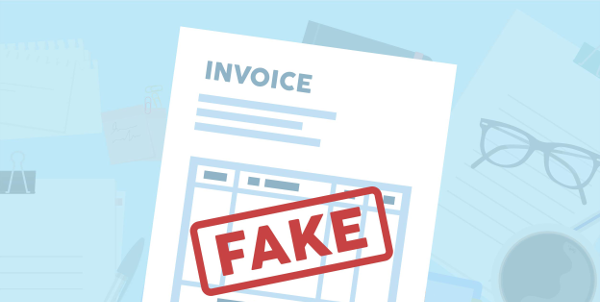
Businesses around the world are being targeted with a cyber-attack that sends victims a fake invoice that looks real enough to fool to most people. It is based on an old scam that used to see invoices faxed or mailed to the victims and now it has made its way into the digital world and instances are on the rise.
You may have already seen some of the less effective attempts – an email advising your domain is expiring (except it’s not from your host and your domain is nowhere near expiration) or others that describe a product or service you would never have purchased.
The new attacks though are much more advanced as they look completely legitimate and are often from contractors and suppliers you actually use. The logos are correct, spelling and grammar are spot on and they might even refer to actual work or products you regularly use. The senders name may also be the normal contact you deal with at that business as cyber criminals are able to ‘spoof’ real accounts and real people. While it is worrying that they know enough about your business to wear that disguise so well, a successful attack relies on you not knowing what to look for.
Here are two types of invoice attacks you may receive:
1) The Payment Redirect
This style of fake invoice either explicitly states that the payment should be made to a certain account (perhaps with a friendly note listing the new details) or includes a payment link direct to a new account. Your accounts payable person believes they are doing the right thing by resolving the invoice without bothering you and unwittingly sends money to a third party. The problem may not be discovered until an invoice from the real supplier comes in or the transaction is flagged in an audit. Due to the nature of international cyber crime, it’s unlikely you’ll be able to recover the funds even if you catch it quickly.
2) The Malware Link
Rather than an immediate cash grab, this style of attack asks your employee to click a link to download the invoice. The email may even look exactly like the ones normally generated by popular accounting tools like Quickbooks, Xero or MYOB. Once your employee has clicked the link, malware is downloaded to your systems that can trigger ransomware or data breaches. While an up-to-date anti-virus should block the attack at that stage, it’s not always guaranteed (especially with new and undiscovered malware). If it does get through, the malware quickly embeds itself deep into your systems and often remains silent until detected or activated.
How to Stay Safe
Awareness is key to ensuring these types of attacks have no impact on your business. As always, keep your anti-virus, firewalls and spam filters up to date to minimize the risk of the emails getting through in the first place.
Secondly, consider implementing a simple set of procedures regarding payments. These could include verifying account changes with a phone call (to the number you have on record, not the one in the email), double checking the invoices against purchase orders, appointing a single administrator to restrict access to accounts or even two-factor authorization for payments. Simple preemptive checks like hovering the mouse over any links before clicking and quickly making sure it looks correct can also help. If anything looks off, hold back on payment / clicking until it has been reviewed. Fake invoices attacks may be increasing, but that doesn’t mean your business will become a statistic, especially now that you know what’s going on and how you can stop them.
We can help increase your security, talk to us today. Call us at 08 8326 4364 or on
su*****@dp*********.au

why new attacks though are much more advanced as they look completely legitimate and are often from contractors?
Yes, hackers are always trying to avoid detection and thus try and look as legitimate as possible and from a reputable or trustworthy source.
thanks for sharing this information
Thank for the information, please visit
VisitUs